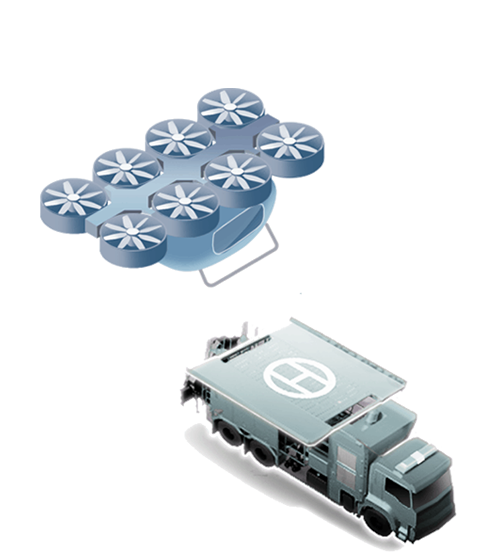For medical rescue services, due to geography and terrain conditions, as well as ground transportation barriers, often medical supplies could not be delivered in time. This deteriorates rescue time effectiveness. Traditional aerial platforms such as helicopters have relatively large overall size and restrictive territory requirements for take-off and landing. These limit their applicability over modern cities, especially populated areas with tall buildings.
Pain Points of the Scene






